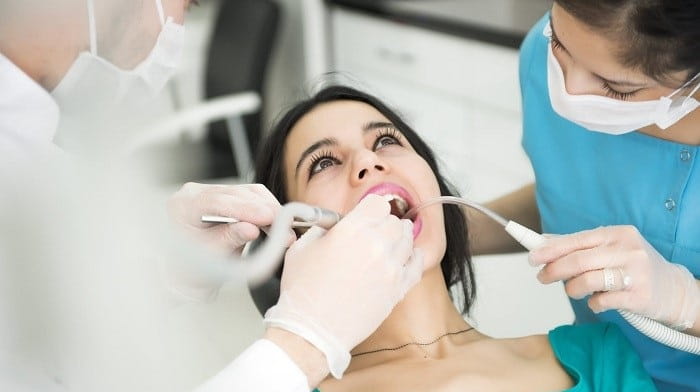A bone graft is a surgical procedure that is usually performed in cases where there is insufficient bone in the jaw to place dental implants. Bone grafts help to replace any missing bone if required. The procedure involves grafting or transplanting bone tissue from bone substitute materials or your own bone from other areas. Bone grafting can be extremely beneficial in building up the bone in areas where the lack of bone may preclude the ability to place dental implants. During your consultation, dentist will give you a thorough guide of your recovery time depending on the size of the graft and other factors. .
Why Consider Dental Bone Graft Surgery?
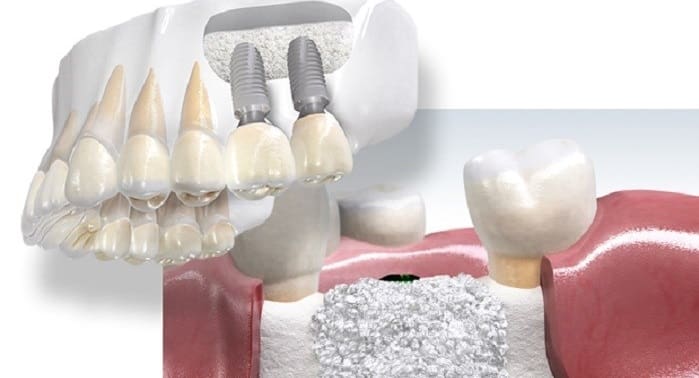
Restoring and maintaining facial bone structure is important for several reasons. Many dental procedures, such as dental implant placement, require that the bone be as close to its original dimension and position as possible for optimal results. Also, the jaw and other facial bones support the skin and muscle that are responsible for our outward cosmetic appearance. Without the support of the underlying bone, our faces can look prematurely aged.
Bone Graft Procedure
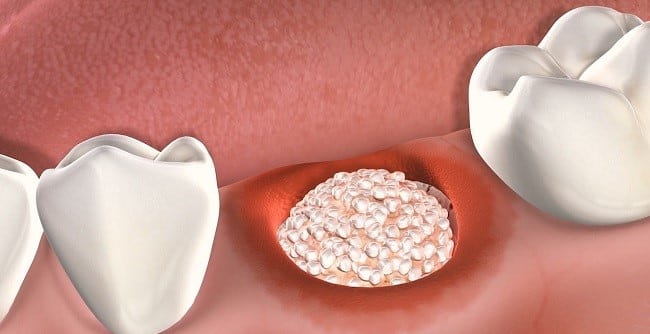
A bone graft for a dental implant is a common procedure that can be performed in the dentist’s surgery as an outpatient. Before the surgery, anaesthesia or IV sedation is administered to prevent any discomfort. Your dentist cleans the area, then makes an incision through the gum tissue to expose the area that requires the bone graft.
If you are receiving bone from your own body, your dentist makes a second incision to harvest the healthy bone tissue.
The healthy bone tissue, or combined bone tissue, is then placed between the two sections of bone that need to fuse. Your dentist may need to make some additional repairs to the surrounding tissue; then they will close the incision site. The healing time may take several weeks to allow for jawbone to regenerate in order for the dental implants to be placed. You will then need several more weeks to heal after the implants are placed before the abutment and crown can be attached.
Recovery Timeline
The following instructions outline your day-by-day recovery following placement of a bone graft.
First day

- On the car ride home, keep the gauze in your mouth that doctor placed following surgery.
- When you get home, remove the gauze and eat a small meal and 2-3 glasses of water. Take your first dose of pain medication and antibiotics (if given by your doctor) at this time.
- Each meal should consist of bland, soft foods that do not require chewing. Your lips and tongue will be numb and can be traumatized by hot foods and vigorous chewing.
- Following your first meal, place a new damp piece of gauze over the extraction sites only if there is continued bleeding. If there is no bleeding, no gauze is needed.
- You should be eating 5-6 small meals per day and drinking 2-3 glasses of juice and/or water per hour.
- Place ice over your cheeks and leave in place for 30 minutes, then remove for 30 minutes, and then replace the ice again. Continue for the entire day.
- Get plenty of rest. Plan on resting with your head elevated on 2 or 3 pillows.
- Place Vaseline on your lips if they are dry.
- Gently brush with warm water (avoid toothpaste) and rinse with warm salt water. Do not spit – allow the rinse to drip out of your mouth and then wipe off your lips.
- Start taking the antibiotics.
Second Day

- You will likely still be swollen and have mild to moderate pain.
- Start a soft food diet (any food you can cut with a fork). Continue drinking plenty of fluids. x Continue oral hygiene care similar to day 1.
- Take your medication as prescribed. x Avoid vigorous activity that elevates your heart rate.
Thid, Fourth, Fifth And Sixth Day
- You will likely still be swollen and have mild to moderate pain.
- Advance your diet as tolerated.
- You may start brushing with toothpaste, flossing and using over the counter mouth rinse. Continue to avoid vigorous rinsing, sucking or spitting.
Seventh Day
- Swelling may be present, but will be significantly decreased. It may take up to 2 weeks for all the swelling to resolve.
- Return to normal diet and activity as tolerated.
- Start the Peridex/Chlorhexidine rinse today and use it for 1 week.
After The 7th Day
Use the syringe to irrigate out the lower extraction sockets (the upper sockets do not need to be irrigated). Use tap water or a 50/50% mix of tap water and mouthrinse three times per day until food is no longer caught back in the area (may take up to 1-2 months after surgery.
Complications
Bleeding
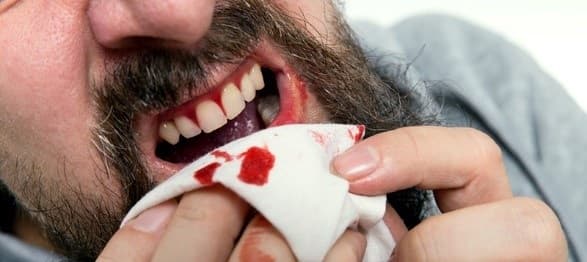
- Apply damp (not soaked) gauze over the extraction site(s) and bite down with firm but gentle pressure for 30 minutes
- Check for bleeding o If continued bleeding, replace with a new piece of damp gauze and hold pressure for 30 – 60 minutes
- Check for bleeding o If bleeding continues, place a wet teabag over each extraction site and bite down for 30 minutes
- Check for bleeding
- Repeat with a new teabag one more time.
- If excessive bleeding continues, call the doctor for further instructions .
Swelling
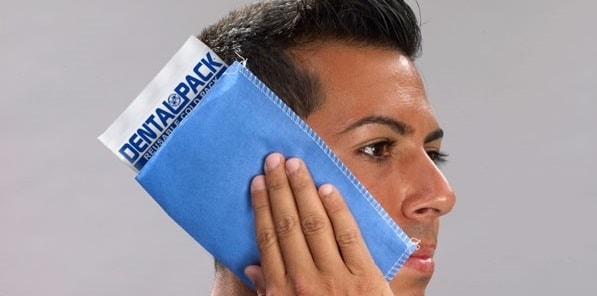
The swelling that is normally expected is usually proportional to the surgery involved. Swelling around the mouth, cheeks, eyes and sides of the face is not uncommon. This is the body’s normal reaction to surgery, inflammation, and eventual repair. The swelling will not become apparent until the day following surgery and will not reach its maximum until 2-3 days post-operatively. The swelling may be minimized by the immediate use of ice packs. Two baggies filled with ice, or ice packs should be applied to the sides of the face where surgery was performed. The ice packs should be left on 20 min’s then off 20 min’s for the first 12 – 24 hours. After 36 hours, ice has no beneficial effect. If swelling or jaw stiffness has persisted for several days, there is no cause for alarm. This is a normal reaction to surgery. Thirty-six hours following surgery, the application of moist heat to the sides of the face is beneficial in reducing the size of the swelling.
Pain

For moderate pain, one or two tablets of Tylenol or Extra Strength Tylenol may be taken every three to four hours or Ibuprofen (Motrin or Advil) two-four 200 mg tablets (600 – 800 mgs) may be taken every 6 hours.
For severe pain, take the medication prescribed as directed (typically narcotic medication). The prescribed narcotic pain medicine will make you groggy and will slow down your reflexes. Do not drive an automobile or work around machinery. Avoid alcoholic beverages. Pain or discomfort following surgery should subside more and more every day. If pain persists, it may require attention and you should call the office.
Discoloration & Bruising
In some cases, discoloration of the skin follows swelling. The development of black, blue, green, or yellow discoloration is due to blood spreading beneath the tissues. This is a rare but normal post-operative occurrence, which may occur 2-3 days post-operatively. Moist heat applied to the area may speed up the removal of the discoloration.
Nausea And Vomiting
n the event of nausea and/or vomiting following surgery, do not take anything by mouth for at least an hour including the prescribed medicine. You should then sip on clears liquids such as flavored waters, tea, or ginger ale. You should sip slowly over a fifteen-minute period. When the nausea subsides you can begin taking soft foods and the prescribed medicine. If your nausea continues for more than 6 hours, please contact doctor.
Other Possible Complications
- If numbness of the lip, chin, or tongue occurs there is no cause for alarm. As stated before surgery, this is usually temporary in nature. You should be aware that if your lip or tongue is numb, you could bite it and not feel the sensation. So be careful. Call doctor if you have any questions.
- Slight elevation of temperature immediately following surgery is not uncommon. If your fever persists, notify our office. Tylenol or ibuprofen should be taken to reduce the fever.
- You should be careful going from the lying down position to standing. You were not able to eat or drink prior to surgery. It was also difficult to take fluids after surgery. Taking pain medications can make you dizzy. You could get light headed when you stand up suddenly. Before standing up, you should sit for a few moments then get up.
- If the corners of your mouth are stretched, they may dry out and crack. Your lips should be kept moist with an ointment such as Vaseline or other lip balms.
- Sore throats and pain when swallowing are not uncommon. The muscles adjacent to the surgical sites can become inflamed and subsequently give some discomfort during swallowing. This will subside in 2-3 days.
- Stiffness (trimus) of the jaw muscles may cause some difficulty in opening your mouth for a few days following surgery. This is a normal post-operative event, which will resolve typically in several days.
Sutures

Sutures are placed the area of surgery to minimize post-operative bleeding and to help healing. These sutures are frequently dissolving sutures, which will typically fall out in 5 – 7 days. Sometimes they become dislodged, this is no cause for alarm. Just remove the suture form your mouth and discard it. So it’s really nothing to worry about.
Exercise
If you are involved in regular exercise, be aware that your normal nourishment intake is reduced. Exercise may weaken you. If you get light headed, stop exercising or reduce your exertion. Do not assume up-side-down positions for 1 – 2 weeks.
Wearing Your Prosthesis Or night Guard
Partial dentures or full dentures should not be used immediately after surgery until your post-operative appointment unless specifically instructed otherwise. Please contact the office if there is any question. When it is placed it should not heavily touch the gums in the area of the surgery. If it does, this can cause ulceration of the wound edges and breakdown of the suture margins. This can lead to loss of the graft. If you have questions about the fit of your partial or complete denture, do not wear it until your general dentist or Drs. Elias, Stephens or Verratti can see you.
Avoid the Following Activities
- Sucking, spitting or rinsing vigorously for the first 3 days
- Smoking or tobacco use for the first week
- If you must use a straw to drink, avoid viscous fluids like a thick milkshake – only gently use a straw with clear, thin liquids

